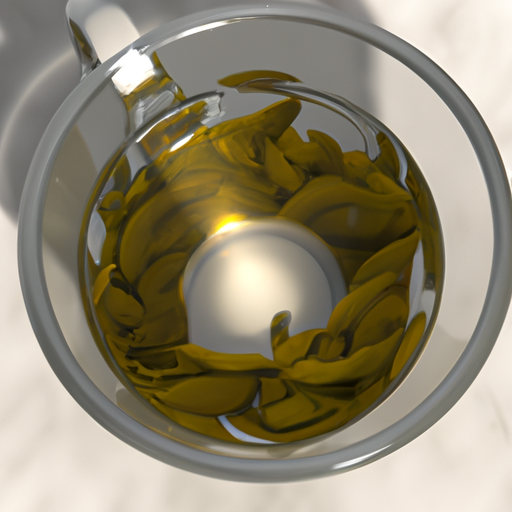White Tea: Delving into the Delicate World of the Least Processed Tea
If you've been sipping your way through the world of tea, chances are you've tried many types, from the rich and earthy to the fresh and green. But have you truly explored the subtle charms of white tea?
White tea is often thought of as the underdog in the family of camellia sinensis, overshadowed by its more robust siblings like green tea, oolong, and black tea. However, there's an artful allure in the delicate flavors and minimal processing that define this unassuming brew. In this post, we're diving into the delicate world of white tea - its history, processing methods, varieties, and potential health benefits.
A Brief History of White Tea
White tea, like all tea varieties, comes from the camellia sinensis plant. Traceable back to ancient China, white tea is the least processed of all tea types. It originated in the Fujian province around the Song Dynasty (960-1279) and was cherished for its delicate flavors and elegant appearance. Back then, only the pluckings of the youngest buds were used, making white tea a rare and expensive luxury.
In time, white tea was popularized by Chinese emperors, and its production methods evolved to include young leaves in addition to buds. Today, countries such as Sri Lanka and India have expanded production, opening up new flavor profiles while still maintaining the essence of white tea.
White Tea Production
White tea is unique in its processing methods, distinguished by its minimal interference with the natural tea leaves. Let's explore the four primary steps in crafting delicious white tea:
-
Plucking: White tea is harvested from the young buds and leaves of the camellia sinensis plant. Timing is crucial; plucking typically occurs in early spring when the buds are most tender.
-
Withering: The plucked tea leaves are spread out to wither, either in the sun or indoors with controlled air circulation. This process reduces the moisture content of the leaves, making them less susceptible to oxidation.
-
Drying: The leaves undergo a slow drying process, typically by air drying or a gentle application of heat, which further reduce the moisture content and lock in the delicate, fresh flavors of the tea.
-
Sorting: Finally, the dried leaves are sorted according to size and quality. The highest quality white teas are typically made from the most tender buds, covered in delicate white hairs that give the tea its name.
The less processing the leaves go through, the closer they remain to their natural state, preserving the authenticity and purity of flavors.
Varieties of White Tea
White tea comes in several varieties, mainly based on geographical origin and bud-to-leaf ratio. Here are some of the most popular types of white tea:
-
Silver Needle (Bai Hao Yin Zhen): Traditionally from China’s Fujian province, this exquisite tea is made only from young, tender buds. Silver Needle boasts needle-like leaves covered in fine, silvery-white hairs, hence the name. Its flavor profile is delicate, with a gentle sweetness and floral notes.
-
White Peony (Bai Mu Dan): Also originating from Fujian, White Peony is made from a combination of young buds and leaves. It has a more robust flavor than Silver Needle, featuring a blend of mildly sweet, floral, and vegetal notes.
-
Shou Mei: Another Fujian tea variety, Shou Mei is a lower grade of white tea consisting of larger, more mature leaves. Its flavor is darker, and more earthy than more delicate white teas.
-
Ceylon White: Produced in Sri Lanka, Ceylon White offers a different flavor profile from its Chinese counterparts. Grown in the island's high-altitude regions, this white tea has a golden hue and tantalizing fruity, floral, and woody notes.
What's Brewing: Preparing and Pairing White Tea
Preparing white tea is straightforward: use fresh, filtered water heated to approximately 75-85°C (167-185°F) and steep for 3-5 minutes. Avoid boiling water or excessive brewing times, as this can damage the delicate flavors.
When it comes to pairing white tea with food, its gentle flavors make it incredibly versatile. Enjoy it with mild, light foods like fresh fruits, green salads, and mild cheeses. Be careful not to pair it with overly powerful dishes, as the flavor of the tea may be drowned out by strong spices, rich sauces, or intense sweetness.
Potential Health Benefits of White Tea
While all tea varieties offer some health benefits, white tea is particularly rich in antioxidants due to its minimal processing. These antioxidants, such as polyphenols and catechins, may contribute to a range of wellness-promoting effects, including:
| Potential Health Benefits | Explanation |
|---|---|
| Boosts heart health | Antioxidants may help lower bad cholesterol and reduce the risk of heart disease |
| Supports weight management | Catechins may help increase metabolism and encourage fat breakdown |
| Protects skin | Antioxidants may protect the skin against damage from UV radiation and environmental factors |
| Reduces inflammation | Polyphenols may have anti-inflammatory properties that combat chronic inflammation |
| Antibacterial properties | White tea extracts have demonstrated antibacterial effects against certain bacteria |
| Potential cancer-fighting effects | Antioxidants may aid in neutralizing cancer-causing free radicals |
It's important to note that while these potential benefits may contribute to overall wellbeing, drinking white tea should not replace medical advice or treatment.
Concluding Thoughts
As we wrap up our exploration, a cup of white tea may seem like nothing more than a gentle whisper in the world of tea. However, its delicate, elegant flavors and minimal processing showcase the true essence of the camellia sinensis plant. In a world where bold is often seen as better, it's imperative to appreciate the subtle beauty of white tea - a testament that sometimes, less is truly more.
Happy steeping! 🍵
